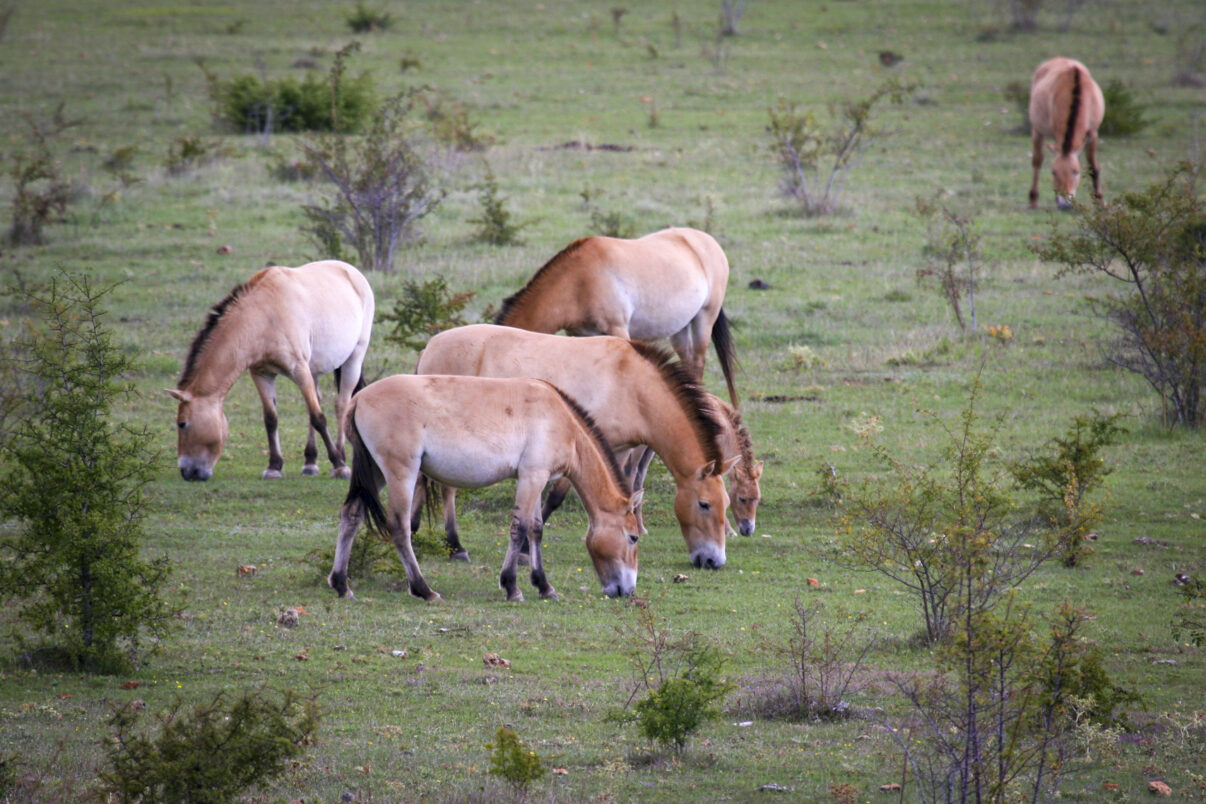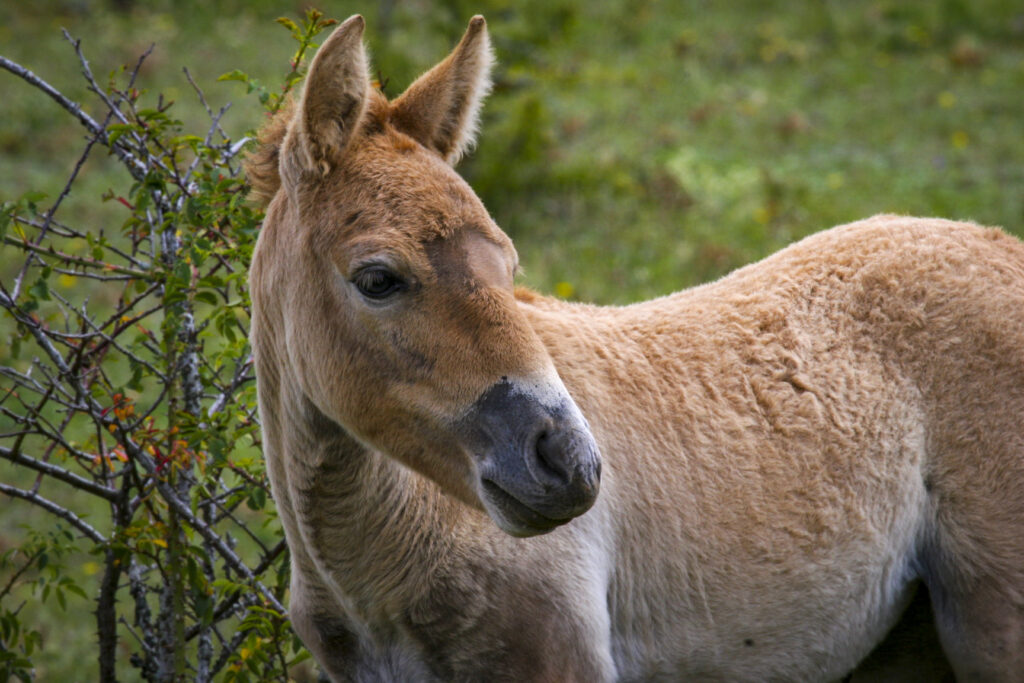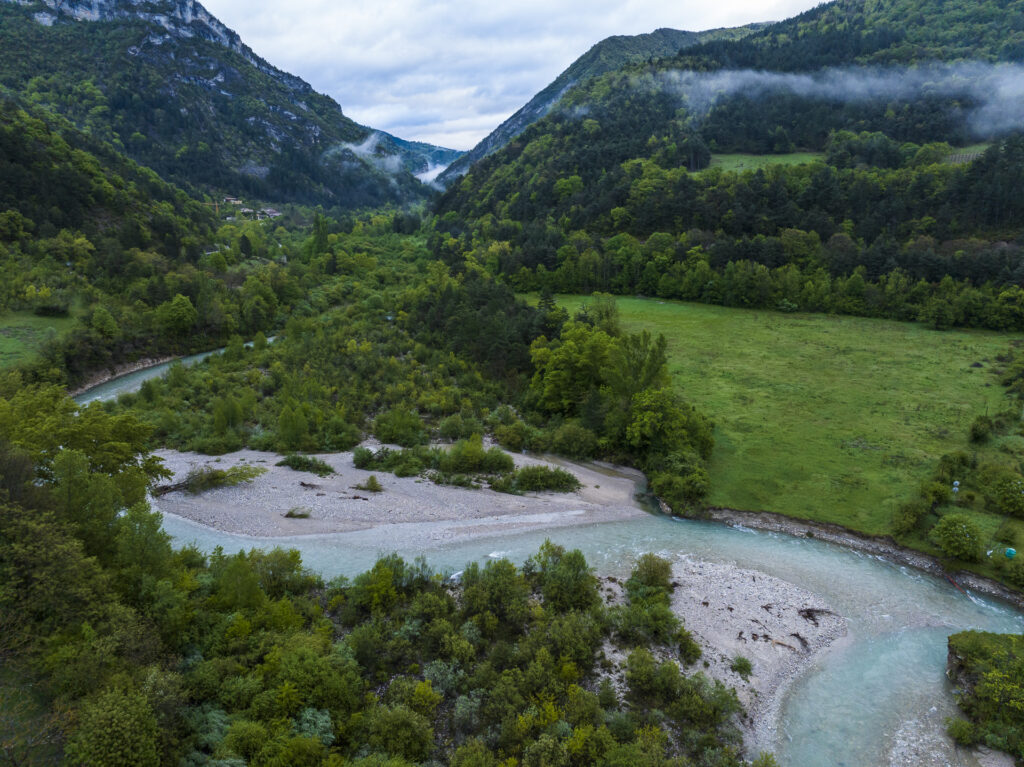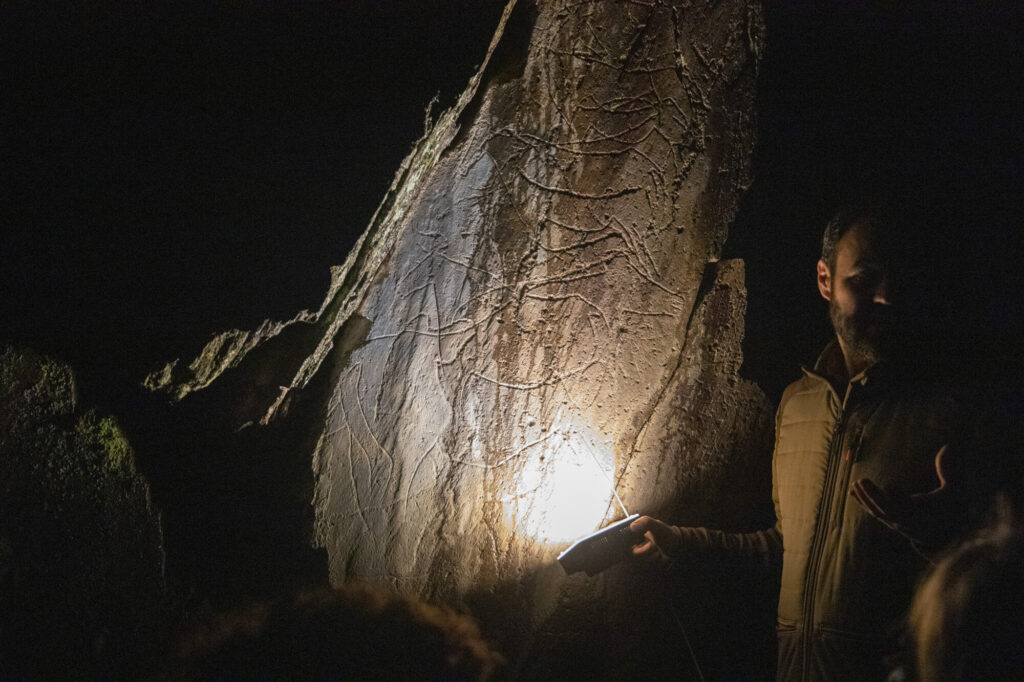French NGO TAKH is working to support the conservation of Przewalski’s horses in Europe and Asia. Membership of the European Rewilding Network will advance the team’s rewilding efforts, and enhance the recovery of this iconic animal and the benefits it delivers.

Supporting Przewalski’s horse recovery
French NGO TAKH was founded in 1990 to support the reintroduction of Przewalski’s horses from France to Mongolia. In 1993, TAKH oversaw the transfer of 11 zoo-born horses to a 400-hectare protected site on the Causse Méjean plateau in the Cévennes National Park. This was followed by the translocation of 22 horses to the Khomyn Tal Reserve in Mongolia in 2004 and 2005, where the herd had grown to 100 horses by 2020.
Today, TAKH has a broader mission. The NGO aims to maintain a viable population of Przewalski’s horses on the Causse Méjean as a genetic reservoir for further translocations, with 36 animals currently living in the park. In addition, they are working to evaluate and enhance the beneficial impact of natural grazing by Przewalski’s horses in European grassland landscapes in collaboration with other rewilding initiatives, regularly sending and exchanging animals.
TAKH has also invested over 3 million euros in the renovation of an abandoned village in the area, which is listed as a UNESCO World Heritage site. Today, the village has become a centre for scientific exchange on Przewalski’s horses between a wide range of stakeholders. As the horses are one of the major attractions in the Cévennes National Park, they help to drive nature-based tourism and provide valuable income for local communities.

Mutual benefits
TAKH has just joined Rewilding Europe’s European Rewilding Network as its 93rd member, with network membership distributed across 29 European countries. With other members involved in the rewilding of horses and other large herbivores to enhance natural grazing, the inclusion of the French initiative will strengthen the network’s collective expertise and help the team at TAKH in their rewilding efforts.
“Membership of the European Rewilding Network will allow TAKH to expand its Przewalski’s horse conservation mission by sharing mutual experience with new partners and information on potential translocation sites,” says Jean Louis Perrin, TAKH’s Executive Director. “It will ensure the viability of our herd by enabling us to translocate horses before we reach the maximum capacity of our own site, which in turn will increase the genetic diversity of the global Przewalski’s horse population. And it will accelerate our plan to demonstrate the positive impact of large, free-ranging herbivores on the landscape. The network will also help to build partnerships for science and conservation, education, and nature-based tourism.”

The fall and rise of the Przewalski’s horse
An endangered subspecies of the wild horse (Equus ferus), the Przewalski’s horse (Equus ferus przewalskii) is the world’s last truly wild horse. Once thought to be the ancestor of domestic horses, they are actually distant cousins, with a different number of chromosomes. They once roamed the vast grassy plains of Eurasia in large herds, from the Urals to Mongolia, but changes in land use, military activity, hunting, hard winters, and capture drove them to extinction. The last sighting of a wild Przewalski’s horse was reported in 1969 in Mongolia.
Through breeding programmes, zoos and reserves across the world have been instrumental in preventing the Przewalski’s horse from dying out altogether, and enabling the animal to make a comeback. Of the approximately 3000 Przewalski’s horses alive today, all are descended from 14 founders that were caught in the wild between 1910 and 1960. Efforts to maintain and enhance genetic diversity among Przewalski’s horse populations through the exchange of information, expertise, and animals are critical to ensuring the health and viability of the subspecies.

Przewalski’s horses in the Iberian Highlands
In 2023, several herds of Przewalski’s horses were released by Rewilding Spain in the Iberian Highlands rewilding landscape in Spain, sourced from the Réserve des Monts d’Azur in France, and Hortobágy National Park in Hungary. More horses may be sourced from TAKH in the future. The horses released in the Iberian Highlands are roaming free across an extensive area, where they will help to reduce the risk of wildfire, increase biodiversity, boost nature-based tourism and environmental education, and improve the animal’s conservation status.
The Iberian Peninsula was once roamed by wild horses with very similar physical features to Przewalski’s horses, as evidenced by engravings and cave paintings, such as those in Altamira. However, these disappeared around 4000 years ago. With livestock numbers in the Iberian Highlands landscape significantly diminished as a result of rural depopulation, the Przewalski’s horses will fulfil the same ecological role as the extinct Iberian wild horse and more contemporary domesticated herbivores. The restoration of natural processes – such as natural grazing and scavenging – is an essential element of the overall rewilding vision for the Iberian Highlands rewilding landscape, enhancing the diversity, resilience and functionality of wild nature, and the benefits it provides to local communities.
Let’s rewild together
Rewilding Europe extends a warm welcome to all European rewilding initiatives that focus on practical, result-oriented rewilding and encourages them to apply for European Rewilding Network membership.
